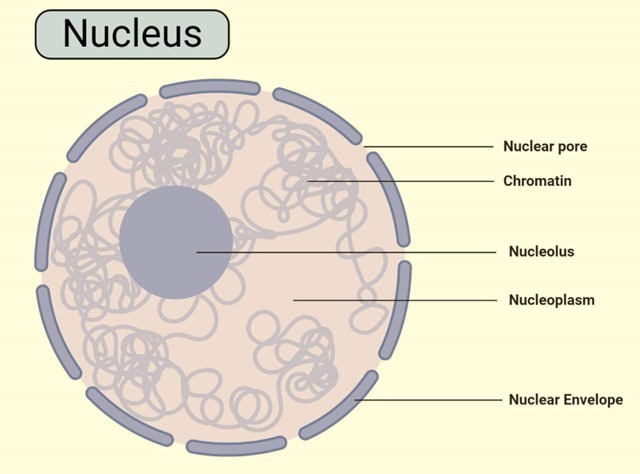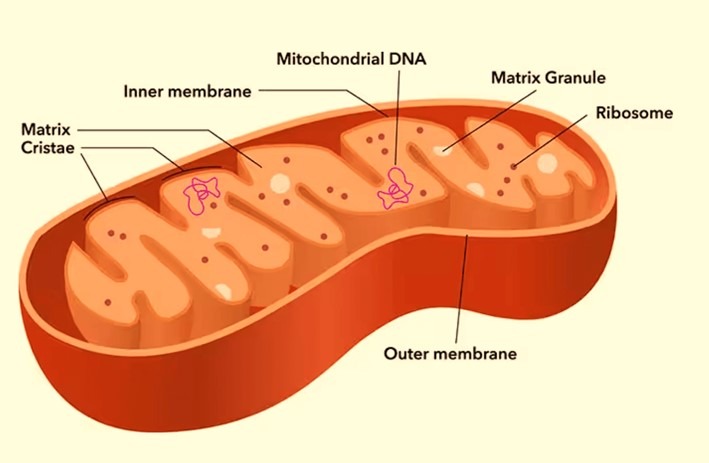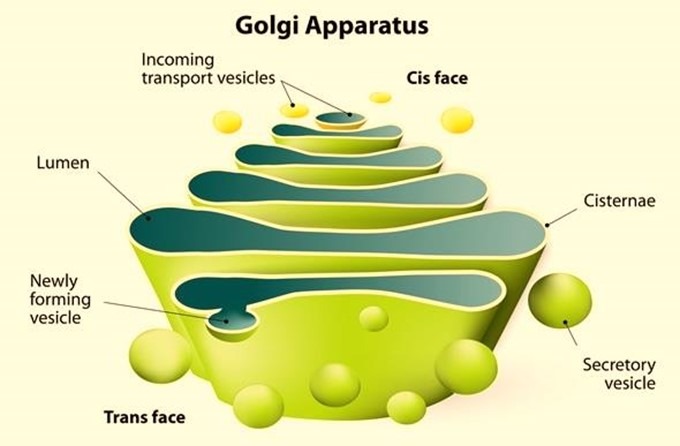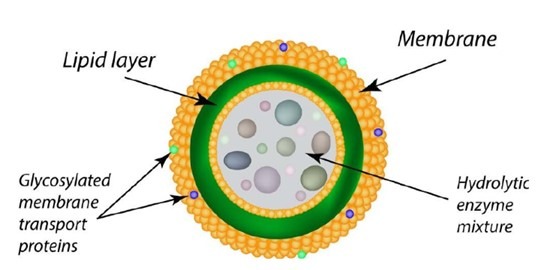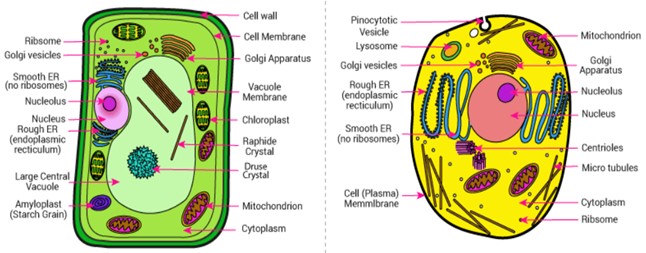BIOLOGY
BIOLOGY
1. Cell: The Unit of Life
1.1. What is a Cell?
1.2. Types of Organisms Based on Cells
1.3. Cell Theory
1.4. Shape and Size of Cells
1.5. Cell Organelles
1.6. Prokaryotes vs Eukaryotes
1.7. Animal Cell vs Plant Cell
1.8. Cell Cycle and Cell Division
Cell: The Unit of Life
Cells are the fundamental structural and functional units of life. All living organisms, whether simple or complex, are composed of cells, making them the smallest unit of life. Due to this essential role, the cell is often referred to as the “building block of life.” It has the remarkable ability to function independently, carrying out vital biological processes necessary for survival. These processes include nutrition, excretion, respiration, growth, reproduction, and response to stimuli.
The term “cell” was first introduced by Robert Hooke in 1665 when he observed the structure of cork under a microscope. However, the first person to observe and describe a living cell was Anton van Leeuwenhoek, who made significant contributions to cell biology by studying microorganisms through his improved microscope.
What is a Cell?
A cell is the smallest, most fundamental unit of life responsible for carrying out all biological functions. All living organisms, from the tiniest bacteria to the largest mammals, are composed of one or more cells. These microscopic units serve as the structural, functional, and biological foundation of life. The cell possesses the ability to self-replicate, ensuring the continuity of life across generations. Due to this essential role in the development and functioning of organisms, cells are often called the “building blocks of life.”
Key Discoveries in Cell Biology:
- Robert Hooke (1665) was the first to observe and describe cells when he examined a piece of cork under a microscope. He coined the term “cell” after noticing the small, box-like structures resembling the rooms in a monastery.
- Anton van Leeuwenhoek (1674) was the first to observe living cells in pond water, paving the way for the discovery of microorganisms.
- Robert Brown (1831) identified and described the nucleus, a vital organelle within the cell that plays a crucial role in genetic material storage and cell function.
Characteristics of Cells:
- Size Variability: While most cells are microscopic and cannot be seen with the naked eye, there are some exceptions. The largest known single cell is the ostrich egg, which can measure up to 15 cm in diameter.
- Diversity: Cells come in various shapes and sizes, depending on their function. For instance, nerve cells are elongated to facilitate the transmission of signals, while red blood cells are biconcave to optimize oxygen transport.
- Structural and Functional Role: Cells form the basis of all biological structures and carry out essential functions, including energy production, waste elimination, and reproduction.
Types of Cells:
Cells are broadly classified into two categories:
1. Prokaryotic Cells:
These are simple, single-celled organisms without a well-defined nucleus. Examples include bacteria and archaea. Their genetic material is present in the nucleoid region but is not enclosed within a membrane.
2. Eukaryotic Cells:
These cells have a well-defined nucleus enclosed by a nuclear membrane and contain membrane-bound organelles such as mitochondria, Golgi apparatus, and endoplasmic reticulum. They are found in plants, animals, fungi, and protists.
Types of Organisms Based on Cells:
1. Single-Celled Organisms: These are organisms made up of only one cell, which carries out all essential life processes. Examples include bacteria, amoeba, chlamydomonas, and paramecium. These organisms rely on simple diffusion for nutrient intake and waste elimination.
2. Multicellular Organisms: These are living beings composed of multiple cells that work together to perform different functions. Examples include animals, plants, and fungi. In multicellular organisms, cells differentiate and specialize to form tissues, organs, and systems, allowing for complex biological processes.
Functions of Cells:
Cells perform several essential functions that sustain life, including:
- Metabolism: Chemical reactions within the cell generate energy needed for survival.
- Growth and Development: Cells undergo division and differentiation to form tissues and organs.
- Reproduction: Cells reproduce through processes such as mitosis and meiosis to ensure the continuation of life.
- Response to Stimuli: Cells react to changes in their environment, allowing organisms to adapt and survive.
The Origins of Cell Theory
The cell theory is one of the most fundamental principles in biology, providing a framework for understanding the structure and function of all living organisms. The development of this theory was a collaborative effort by several pioneering scientists in the 19th century.
- Matthias Schleiden (1838)– A German botanist, Schleiden observed that all plant tissues were composed of cells. His work highlighted the cellular basis of plant life, suggesting that cells were the basic building blocks of plants.
- Theodor Schwann (1839)– A British naturalist, Schwann extended Schleiden’s findings to animal tissues. He discovered that while plant cells have a rigid cell wall, animal cells are surrounded by a flexible plasma membrane. Together, Schleiden and Schwann proposed that all living organisms, whether plants or animals, are made up of cells.
- Rudolf Virchow (1855)– A German physician, Virchow expanded the cell theory by introducing the concept that cells arise only from pre-existing cells (“Omnis cellula e cellula”). This principle disproved the earlier idea of spontaneous generation and reinforced the continuity of life through cell division.
The Three Tenets of Modern Cell Theory
Today, cell theory is summarized by three key principles:
- All living organisms are composed of cells and their products.Whether unicellular (like bacteria) or multicellular (like humans), life is structured around cells.
- The cell is the basic unit of life.Cells carry out essential biological functions, including metabolism, growth, and reproduction.
- All cells arise from pre-existing cells.New cells are produced through the division of existing cells, ensuring genetic continuity.
These principles unify biology, explaining how life is organized, maintained, and propagated.
Diversity in Cell Shape and Size
Cells exhibit remarkable diversity in their morphology, adapting to their specific functions. Some common shapes include:
- Irregular(e.g., white blood cells, which change shape to engulf pathogens)
- Disc-like(e.g., red blood cells, optimized for oxygen transport)
- Polygonal(e.g., plant leaf cells, tightly packed for structural support)
- Columnar or cuboidal(e.g., epithelial cells lining organs)
- Thread-like(e.g., nerve cells with long axons for signal transmission)
What Determines Cell Shape?
- Cell Membrane:The plasma membrane defines the boundary of animal cells, providing flexibility.
- Cell Wall:Found in plants, fungi, and bacteria, the cell wall provides rigidity and structural support, maintaining a fixed shape.
Variations in Cell Size
Cells range dramatically in size:
- Smallest cell:Mycoplasma (a bacterium) – about 0.1 micrometers in diameter.
- Largest isolated single cell:Ostrich egg – up to 15 cm in diameter.
- Longest cell: Nerve cells in
Cell Organelles: The Building Blocks of Life
Cell organelles are specialized structures within a cell that perform dedicated functions necessary for the cell’s survival, growth, and efficiency. These organelles work together in a highly coordinated manner, ensuring the proper functioning of both plant and animal cells. Below is an in-depth look at the major cell organelles and their functions:
1. Nucleus: The Control Center of the Cell
The nucleus is one of the most vital organelles, often referred to as the “control center” of the cell. It houses the genetic material (DNA) and regulates all cellular activities, including growth, metabolism, and reproduction. The nuclear membrane, a double-layered envelope, encloses the nucleus and contains nuclear pores that facilitate the exchange of materials between the nucleus and the cytoplasm. Inside the nucleus, the nucleolus is responsible for the production of ribosomes.
- Found in both plant and animal cells.
- Plant cells can sometimes contain multiple nuclei.
2. Mitochondria: The Powerhouse of the Cell
Mitochondria are often called the “powerhouse” of the cell because they generate energy in the form of Adenosine Triphosphate (ATP) through cellular respiration. They have a double-membrane structure, with the inner membrane folded into cristae, increasing the surface area for ATP production.
- Present in both plant and animal cells.
- Plant cells also contain chloroplasts for photosynthesis.
3. Endoplasmic Reticulum (ER): The Transport Network
The endoplasmic reticulum (ER) is an extensive membrane network involved in protein and lipid synthesis, as well as material transport. It exists in two forms:
- Rough ER: Studded with ribosomes, it plays a key role in protein synthesis and modification. The proteins synthesized here are often transported to other organelles or secreted from the cell.
- Smooth ER: Lacks ribosomes and is involved in lipid synthesis, metabolism, and detoxification of harmful substances.
Both types of ER are found in both plant and animal cells.
4. Golgi Apparatus: The Cell’s Post Office
The Golgi apparatus processes, modifies, sorts, and packages proteins and lipids before they are transported to their final destinations within or outside the cell. It works in close coordination with the ER.
- Present in both plant and animal cells.
5. Lysosomes: The Digestive System of the Cell
Lysosomes are membrane-bound organelles that contain digestive enzymes responsible for breaking down waste materials, cellular debris, and foreign invaders. Due to their function in breaking down cellular components, they are sometimes referred to as the “suicide bags of cells.”
- More common in animal cells, while plant cells have similar structures for digestion.
6. Ribosomes: The Protein Factories
Ribosomes are small, non-membrane-bound organelles responsible for protein synthesis. They can be found:
- Freely floating in the cytoplasm.
- Attached to the rough ER.
Their main function is to translate messenger RNA (mRNA) into proteins, which are essential for various cellular functions.
- Present in both plant and animal cells.
7. Chloroplasts: The Site of Photosynthesis
Chloroplasts are unique to plant cells and some algae, playing a crucial role in photosynthesis by converting sunlight into chemical energy stored in glucose. They contain chlorophyll, a green pigment that captures light energy.
- Found only in plant cells.
- Have a double-membrane structure.
8. Vacuoles: Storage and Structural Support
Vacuoles are large, membrane-bound organelles responsible for storing nutrients, water, and waste products. They also help maintain turgor pressure, which provides structural support to plant cells.
- Plant cells have a large central vacuole that occupies most of the cell’s volume.
- Animal cells contain smaller vacuoles for storage and waste disposal.
9. Cytoplasm: The Cellular Matrix
The cytoplasm is a jelly-like substance found between the nucleus and the cell membrane, containing all the cell’s organelles and facilitating their movement.
- Present in both plant and animal cells.
10. Cell Membrane: The Protective Barrier
The cell membrane is a semi-permeable lipid bilayer that controls the movement of substances into and out of the cell. It is composed of phospholipids, proteins, and carbohydrates and provides structural support and communication.
- In plant cells, it lies beneath the rigid cell wall.
- In animal cells, it serves as the outermost boundary.
Cell organelles are the essential components of life, each performing distinct roles that contribute to the overall functioning and sustainability of the cell. While plant and animal cells share many organelles, certain structures like chloroplasts and large vacuoles are exclusive to plant cells, whereas lysosomes are more prominent in animal cells. Understanding these organelles provides insights into how life operates at the microscopic level, paving the way for advancements in biology, medicine, and biotechnology.
Prokaryotic Or Eukaryotic
- All cells on Earth can be classified into one of two broad categories: prokaryotic or eukaryotic.
- Organisms with prokaryotic cells (prokaryotes) include bacteria and archaea.
- While bacteria are found virtually everywhere on Earth, archaea are typically found in extreme environments, such as hot springs.
- Organisms with eukaryotic cells (eukaryotes) include protists, fungi, plants, and animals—including humans
Prokaryotic Cell
The name “prokaryote” is derived from the Greek words “pro” (which means “before”) and “karyon,” which means “cell” (meaning: kernel). It translates as “before nuclei” in English. A category of living organisms known as prokaryotes has been around for about 3.5 billion years, making it one of the most ancient groups of species on the planet These prokaryotes flourished in the earth’s prehistoric environment, with some utilising chemical energy and others harnessing solar energy to survive. These extremophiles have survived for millions of years, evolving and adapting as their environment changed. Scientists hypothesise that these organisms were the forerunners of the eukaryotes.
Prokaryotic cells are substantially smaller and less complex than eukaryotic cells in terms of size and complexity. Besides not having membrane-bound cell organelles such as a nucleus, prokaryotic cells have another distinguishing feature: they do not have a cell membrane. The process of binary fission is responsible for the process of reproduction.
Prokaryotes are characterised structurally by the presence of a capsule that encircles their entire body and serves as a protective layer. This is essential for preventing the phagocytosis process from occurring (where the bacteria gets engulfed by other eukaryotic cells, such as macrophages) It is a hair-like appendage found on the external surface of most prokaryotes that aids in the organism’s ability to attach itself to a variety of different surroundings and survive in them. Due to the fact that the pilus is resistant to being flushed, it is sometimes referred to as attachment pili. It is a phenomenon that is frequently observed in microorganisms.
The cell wall is located directly beneath the protective layer and is responsible for the strength and stiffness of the cell. The cytoplasm, which aids in the growth of the cell, is found further down in the cell and is contained by the plasma membrane, which separates the contents of the cell’s interior from the environment outside the cell. Ribosomes are found in the cytoplasm, and they play a vital part in the process of protein synthesis. It is also one of the tiniest components in the cell, making it a valuable resource.
Mesosomes are peculiar structures seen in some prokaryotic cells that aid in the production of oxygen for the cell’s metabolism. Most prokaryotes also contain plasmids, which are tiny circular bits of DNA that are found in most bacteria. Flagella are present to aid in locomotion; however, pilus can also be used to aid in locomotion in some circumstances. Bacteria and archaea are two examples of prokaryotic species that are commonly encountered. Aside from that, all of the members of the Kingdom of Monera are prokaryotes.
Eukaryotic Cell
When you combine the Greek words “eu” (which means “good”) with the Greek word “karyon” (which means “kernel”), you get “good or true nuclei,” which is what the term “Eukaryotes” refers to. Eukaryotes are far more sophisticated and much larger than prokaryotes in in size and complexity. With the exception of Kingdom Monera, they represent practically all of the great kingdoms. Eukaryotes are characterised structurally by the presence of a cell wall, which serves to maintain and protect the plasma membrane. The plasma membrane surrounds the cell and regulates the entry and exit of specific chemicals into and out of the cell.
The nucleus is home to DNA, which is responsible for storing all of the body’s genetic material. The nuclear membrane surrounds the nucleus and protects it from outside influences. The nucleolus is a structure found within the nucleus that is critical in the creation of proteins and other biomolecules. Additionally, mitochondria are found in eukaryotic cells, and these organelles are responsible for the production of energy, which is then consumed by the cell.
Chloroplasts, which are found only in plant cells, are the subcellular locations where photosynthesis takes place. Materials are transported through the body thanks to the endoplasmic reticulum. Other cell organelles that perform various other roles in addition to these include ribosomes, lysosomes, Golgi bodies, cytoplasm, chromosomes, nuclei, vacuoles, and centrosomes. These organelles are located in the nucleus of the cell and are found in the nucleus of the cell. Eukaryotes comprise essentially every unicellular organism with a nucleus, as well as all multicellular organisms, as well as the majority of bacteria.
Prokaryotes vs Eukaryotes
Feature | Prokaryotic Cell | Eukaryotic Cell | |||
Definition | Simple, unicellular organisms without a nucleus | Complex cells with a nucleus and membrane-bound organelles | |||
Examples | Bacteria, Archaea | Animals, Plants, Fungi, Protists | |||
Cell Size | Small (0.1–5 µm) | Larger (10–100 µm) | |||
Nucleus | Absent (DNA in nucleoid region) | Present (DNA enclosed in nuclear membrane) | |||
DNA Structure | Circular, single-stranded |
| |||
Membrane-bound Organelles | Absent | Present (Mitochondria, ER, Golgi, etc.) | |||
Cell Wall | Present (made of peptidoglycan in bacteria) | Present in plants (cellulose) and fungi (chitin); absent in animals | |||
Mode of Reproduction | Asexual (binary fission) | Asexual (mitosis) or sexual (meiosis) | |||
Metabolism | Aerobic or anaerobic | Mostly aerobic |
Difference between Plant cell and Animal cell.
The cell is the basic unit of life, and cells are responsible for almost all of life’s functions. Multicellular organisms have a huge number of cells, whereas unicellular species have only one cell. Unicellular organisms are thought to be one of the first forms of life on Earth, with more sophisticated multicellular species subsequently evolving from them. Specialized cells are seen in multicellular organisms. Cell organelles in multicellular organisms are complex. Complex cell organelles are uncommon in unicellular species.
The basic difference between plant cell and animal cell is Plants play the job of producer in an ecosystem, whilst animals play the role of consumer, which explains why their daily activities and functions differ. Not only that, but their cell structures are also diverse. Plants and animals have different cell structures and organelles. They are classified mostly according to their function. Plants and animals differ due to differences in their cell makeup, and as a result, their structure and functions differ as well.
The another difference between plant cell and animal cell is Each cell organelle has a specific purpose, and while some of the cell organelles are found in both plant and animal cells, others may be exclusive to only one.
Each cell organelle has a specific purpose, and while some of the cell organelles are found in both plant and animal cells, others may be exclusive to only one. It might be the fact that all living species are made up of cells with similar structures, but still, there remain variances in the architectures of plant and animal cells. The cell membrane, nucleus, mitochondria, and vacuoles are all structures found in both plant and animal cells, however, the cell wall and chloroplasts are two structures that are just present in plants.
Someimportant difference between animal cell and plant cell are given below.
- Plant cells have a cell wall. On the other hand, Animal cells lack a cell wall. However, Plants rely on their cell walls for stability.
- Plants use chloroplasts to perform photosynthesis, which allows them to produce food, and thus they have it, however, Animal cells lack chloroplasts.
- Animal cells contain smaller vacuoles (if any) and are irregular or spherical, whereas plant cells have one or more big vacuoles and are square or rectangular in appearance. Large vacuoles assist the plant to maintain its shape and allow it to store water and food for later use.
- A plant cell’s nucleus is present and located on one side of the cell, whereas an animal cell’s nucleus is located in the centre.
- Lysosomes are present in plant cells but are very rare, whereas they are present and can be plentiful in animal cells.
- Centrosomes are not present in plant cells, however, they are present in animal cells.
- Both cell types have cytoplasm, as well as ribosomes and the Golgi Apparatus.
- Plastids can be found in plant cells, however, they are not seen in animal cells.
- In a plant cell, Cilia is lacking, although it is found in the majority of animal cells.
- Mitochondria are present in plant cells but in fewer numbers than in animal cells.
- A plant cell’s mode of nutrition is largely autotrophic, whereas an animal cell’s mode of nutrition is heterotrophic.
Plant and animal cells both feature membrane-bound organelles including the endoplasmic reticulum, mitochondria, the nucleus, Golgi apparatus, peroxisomes, and lysosomes, as well as membranes like cytoskeletal elements and cytoplasm. Plant cells have the potential to be larger than animal cells. Animal cells have a normal range of 10 to 30 micrometres, while plant cells have a range of 10 to 100 micrometres.
Animal Cell vs Plant Cell
Feature | Plant Cell | Animal Cell |
Size | Usually larger than animal cells | Usually smaller than plant cells |
Cell Wall | Present (composed of middle lamella, primary, and secondary walls) | Absent |
Plasmodesmata | Present | Absent |
Chloroplasts | Present (for photosynthesis) | Absent |
Vacuole | Large and permanent | Small and temporary |
Centrioles | Absent (except in motile cells of lower plants) | Present |
Nucleus | Present, located towards the periphery | Present, centrally located |
Lysosomes | Rare | Present |
Cell Cycle and Cell Division
The process by which a cell synthesizes cell components, splits into two daughter cells, and replicates its genome (DNA replication) is known as the cell cycle. It is essential for the development, growth, and reproduction of cells.
Cell Division Types: There are two types of cell division
- Mitosis and
- Meiosis
The cell cycle is the fundamental process by which cells grow, duplicate their genetic material, and divide to form new cells. This cycle is essential for the development, growth, repair, and reproduction of all living organisms. It ensures that genetic material is accurately replicated and distributed to daughter cells, maintaining the integrity of life.
The cell cycle consists of several phases:
- Interphase (G1, S, and G2 phases) – The phase where the cell grows, carries out normal functions, and duplicates its DNA in preparation for division.
- M Phase (Mitosis or Meiosis) – The phase where the cell divides into two daughter cells.
- Cytokinesis – The final step in cell division where the cytoplasm splits, resulting in two separate cells.
Types of Cell Division
There are two main types of cell division:
1. Mitosis
Mitosis is a type of cell division that results in two identical daughter cells, each containing the same number of chromosomes as the parent cell. It occurs in somatic (body) cells and is responsible for growth, tissue repair, and asexual reproduction in some organisms.
Phases of Mitosis:
- Prophase – Chromosomes condense, the nuclear envelope begins to break down, and spindle fibers start forming.
- Metaphase – Chromosomes align at the center (equatorial plate) of the cell.
- Anaphase – Sister chromatids are pulled apart to opposite poles of the cell.
- Telophase – A nuclear membrane reforms around each set of chromosomes, leading to the formation of two nuclei.
- Cytokinesis – The cytoplasm divides, resulting in two identical daughter cells.
2. Meiosis
Meiosis is a specialized type of cell division that occurs in reproductive cells (gametes: sperm and egg cells). It reduces the chromosome number by half, producing four genetically unique daughter cells. This process is crucial for sexual reproduction and genetic diversity.
Phases of Meiosis:
Meiosis consists of two successive divisions: Meiosis I and Meiosis II.
- Meiosis I: The homologous chromosomes separate.
- Prophase I – Chromosomes condense, and homologous chromosomes undergo recombination (crossing over).
- Metaphase I – Homologous chromosomes align at the center.
- Anaphase I – Homologous chromosomes are pulled apart.
- Telophase I and Cytokinesis – Two haploid daughter cells are formed.
- Meiosis I: The homologous chromosomes separate.
-
- Meiosis II: The sister chromatids separate, similar to mitosis.
- Prophase II – Chromosomes recondense.
- Metaphase II – Chromosomes align at the center.
- Anaphase II – Sister chromatids separate.
- Telophase II and Cytokinesis – Four genetically distinct haploid cells are produced.
- Meiosis II: The sister chromatids separate, similar to mitosis.
Importance of Cell Division
- Growth and Development – Mitosis allows organisms to grow by increasing the number of cells.
- Tissue Repair and Healing – Damaged or dead cells are replaced through mitosis.
- Genetic Variation – Meiosis introduces genetic diversity through recombination and independent assortment.
- Reproduction – Unicellular organisms reproduce through mitosis, while sexual reproduction relies on meiosis to create gametes.
The cell cycle and cell division are essential processes for sustaining life, ensuring proper growth, maintenance, and reproduction of organisms.
Feature | Mitosis | Meiosis |
Definition | A type of cell division that results in two identical daughter cells | A type of cell division that results in four genetically different daughter cells |
Purpose | Growth, repair, and asexual reproduction | Formation of gametes (sperm and egg cells) for sexual reproduction |
Location | Occurs in somatic (body) cells | Occurs in germ cells (testes and ovaries) |
Number of Divisions | One (single division) | Two (Meiosis I and Meiosis II) |
Number of Daughter Cells | Two | Four |
Genetic Composition | Identical to parent cell (diploid, 2n) | Genetically different from parent cell (haploid, n) |
Chromosome Number | Maintains the same chromosome number as parent cell (2n → 2n) | Reduces chromosome number by half (2n → n) |
Type of Reproduction | Asexual reproduction or growth | Sexual reproduction |
Daughter Cell Type | Diploid (2n) | Haploid (n) |
Occurs in | All organisms (unicellular and multicellular) | Only sexually reproducing organisms |

